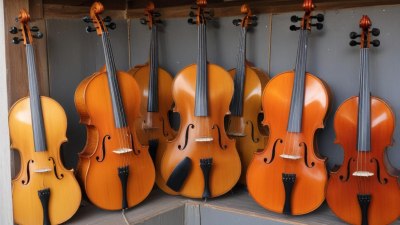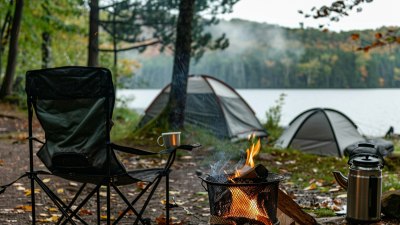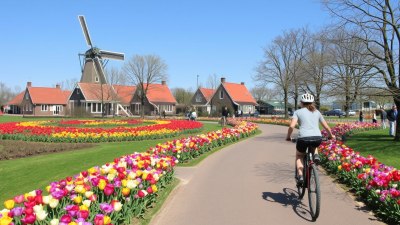Learning to Make Local String Instruments in Workshops
Discover the art of crafting local string instruments in hands-on workshops designed for all skill levels.

This image was created with the assistance of Freepik
In recent years, there has been a significant resurgence of interest in local string instruments and their construction. This renewed appreciation for craftsmanship and traditional music forms has led to an increase in workshops across the globe, where aspiring musicians, artisans, and enthusiasts come together to learn the intricate art of making string instruments. These workshops offer not only hands-on experiences but also provide insight into the cultural significance of these instruments, enabling participants to forge a deeper connection with the music they create.
The process of building local string instruments can vary greatly depending on the type of instrument being made, the materials used, and the specific cultural traditions involved. For example, participants may learn to construct instruments such as banjos, ukuleles, fiddles, or even country-specific designs like the sitar or the koto. Each of these instruments has its own unique construction methods and sound characteristics, which are deeply rooted in the culture from which they originate. Engaging in workshops allows participants to not only gain practical skills but also learn about the history and significance behind each instrument.
The Materials and Tools
One of the first lessons in any instrument-making workshop is understanding the materials and tools required for construction. Common materials for string instruments include various kinds of wood (such as maple, mahogany, and spruce), metal for strings, and sometimes even animal materials for specific types of string or decorative elements. Participants are often encouraged to use locally sourced materials, which not only supports regional economies but also provides a unique authenticity to the instruments being crafted.
Along with materials, participants need to familiarize themselves with the tools that are vital for instrument construction. These can range from standard woodworking tools like saws, chisels, and sanders, to more specialized equipment like luthier knives and clamps. Safety is a paramount concern; therefore, workshops typically commence with a safety briefing to ensure all participants are aware of proper tool handling and workspace etiquette.
The Process of Building
The process of building a string instrument in a workshop is exciting, often beginning with a design phase where participants sketch their ideas and plan their instruments. Instructors help guide the design process, ensuring that participants understand the acoustic implications of their choices, including body shape, material density, and string placement. With a plan in hand, participants move on to cutting and shaping the wood, which is the most physically demanding part of the process, but also one of the most rewarding. Participants take pride in transforming rough pieces of wood into beautiful instruments.
Once the body of the instrument is shaped, participants begin the assembly process. This involves securely attaching components such as the neck, fingerboard, and bridge, which are essential for the functioning of the instrument. Instructors emphasize the importance of precision during this step, as any misalignments can affect the instrument’s playability and tonal quality. The finishing touches come next, with sanding and varnishing involved to protect the wood and enhance its appearance.
Tuning and Testing
After assembly, the moment of truth arrives: tuning and testing the instrument. Participants learn about different tuning methods specific to their instruments and the importance of string tension and stretching. This stage provides a thrilling connection between creation and sound, as participants pluck their freshly crafted strings for the first time. Listening to the tones and pitches produced gives a satisfying closure to the challenging work of crafting an instrument from scratch.
In addition to the technical aspects of tuning, participants are encouraged to explore the emotional connections they have with the music that their instruments can create. Many workshops incorporate group activities that involve playing together, allowing participants to experience the joy of music-making in a collective setting, which is often as enriching as the process of building itself.
Finding the Right Workshop
For anyone interested in learning how to make local string instruments, there are various resources available to help find the right workshop. Local music shops, community centers, and educational institutions frequently organize workshops or classes, while online platforms also list opportunities ranging from beginners’ courses to advanced seminars. It’s essential for potential participants to research the credentials of the instructors and the reputation of the workshop to ensure a rewarding learning experience. Recommendations from past participants can be invaluable when selecting the right fit.
Another increasingly popular option is to participate in retreats or immersive experiences focused solely on instrument building. These events often last several days to weeks, allowing participants to delve deeper into the craft, receive one-on-one mentorship, and focus on honing their skills. Such retreats can be particularly beneficial for those looking to make a career out of instrument making or those seeking to expand their artistic practices.
The Cultural Significance
Learning to make local string instruments goes beyond mere craftsmanship; it’s also about cultural appreciation and preservation. Each instrument often has a rich history and a unique place within its cultural context. By understanding and practicing the methods used to create these instruments, participants contribute to the dialogue surrounding cultural heritage and continuity. In many workshops, emphasis is placed on the traditions associated with making and playing the instrument, which can sometimes include storytelling or playing music specific to that tradition.
Furthermore, these workshops encourage participants to think critically about the music they enjoy and the stories behind the instruments they create. This engagement fosters a sense of community, connecting individuals with similar passions and facilitating friendships that can last beyond the workshop experience.
In conclusion, participating in workshops focused on making local string instruments offers a multifaceted experience, combining artistic learning, cultural engagement, and personal fulfillment. As attendees leave with their very own handcrafted instruments, they also gain valuable knowledge and skills that can inspire them for years to come. Whether as a hobby, a passion, or a potential career path, instrument-making workshops provide a meaningful entry point into the world of music, creativity, and community building. Embracing this art form creates connections that may resonate through generations, ensuring the sounds of tradition continue to echo in modernity.











